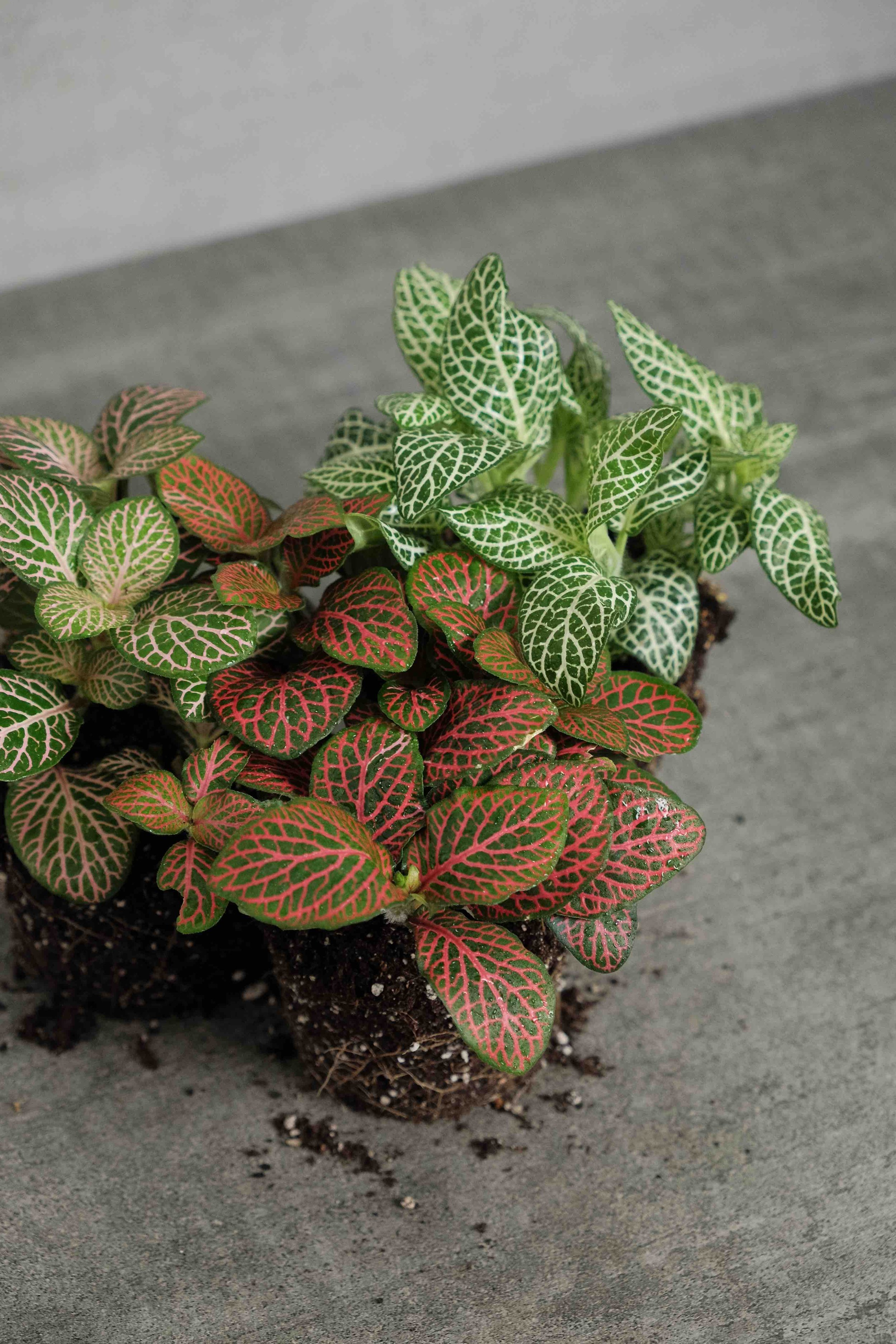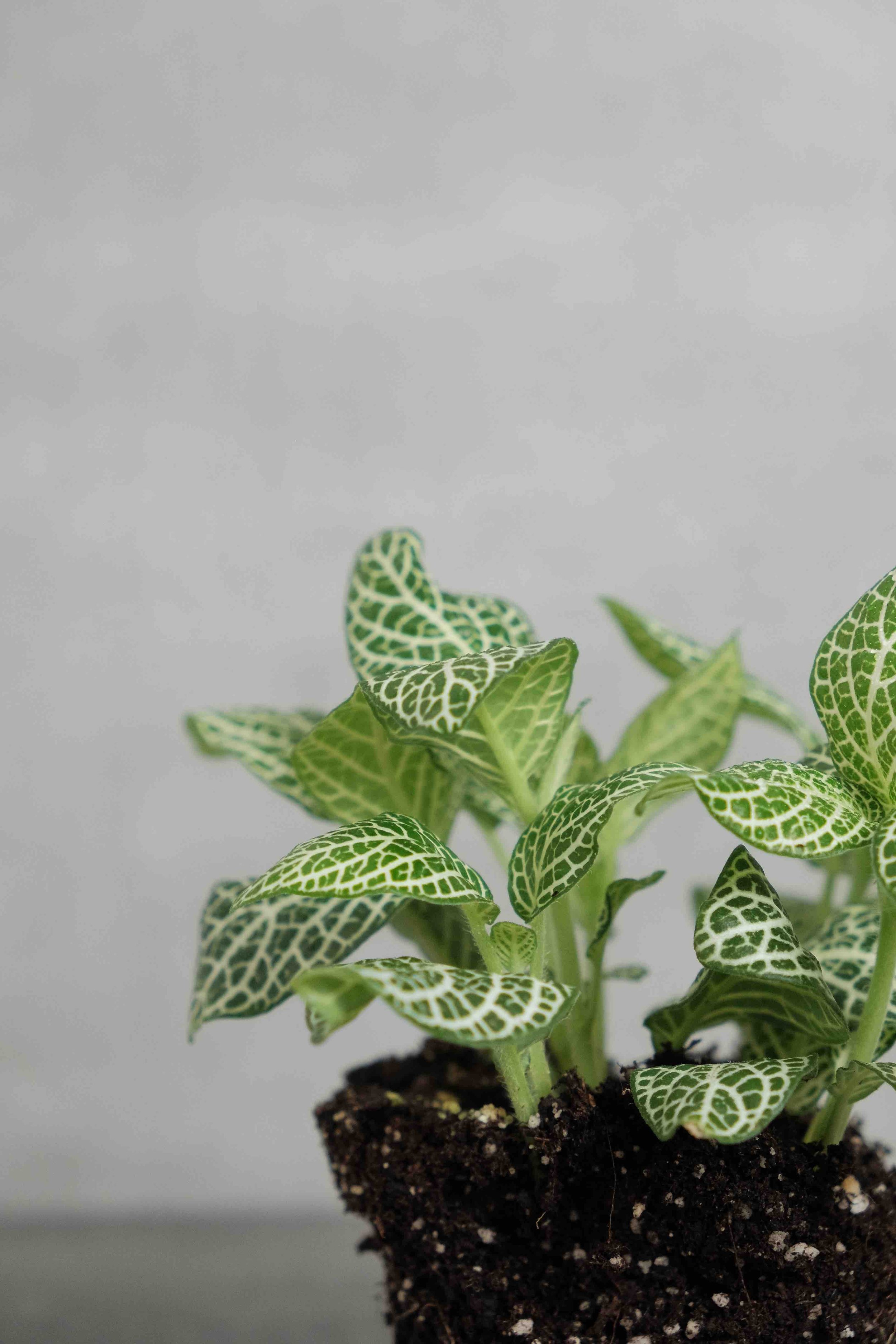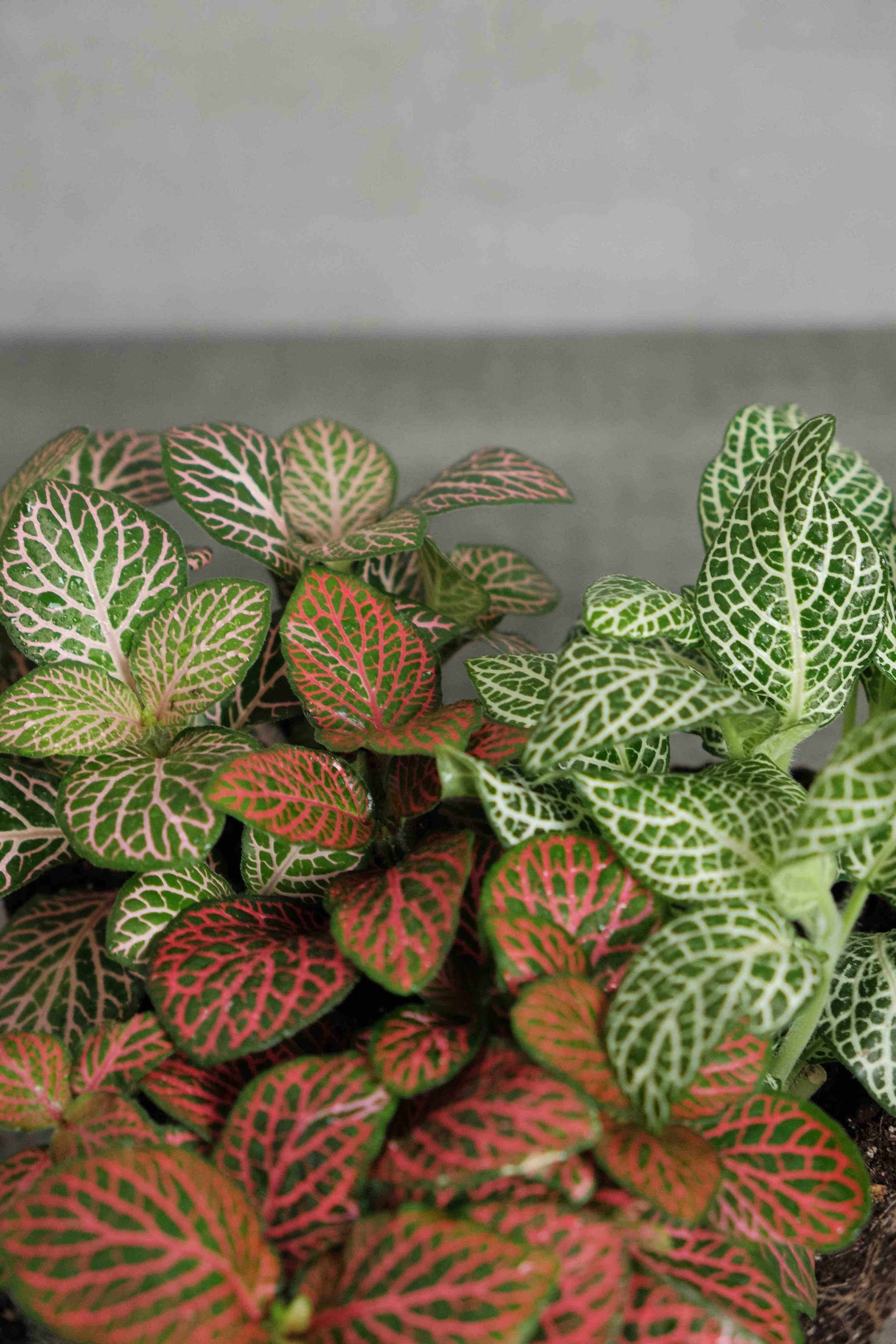Plant Profile
Fittonia
a.k.a. Fittonia Albivenis // Nerve Plant
A small plant that visually packs a punch, the Fittonia grows to a maximum of 6 inches tall and is known for the contrasting colours that run through the veins of its leaves. An evergreen plant, there are a number of different varieties of Fittonias that have silver/white, pink, red or green veins. The Fittonia is not the easiest plant to maintain as it does require constant high humidity to reflect its natural habitat of the rainforests of South America, however the beauty of the plant is reward enough for the levels of TLC required.
Top Tips
✔ If allowed to dry out too much Fittonias will become limp - don’t panic as the plant will spring back once it has had a good drink!
✔ As Fittonias love high humidity they are the perfect plant to pop in a homemade terrarium.
Plant Care
-
The Fittonia needs bright, indirect light; a north facing window is the ideal spot. Be mindful that too much light can cause the plant’s leaves to burn whereas too little light can result in the plant’s vibrant colour fading.
-
The Fittonia likes for its soil to be constantly moist, but not soggy, it is best to water the plant once the top soil has dried out.
-
As the Fittonia is a tropical plant it prefers higher humidity levels, so it is best to mist the plant very regularly.
-
During the spring and summer feed the Fittonia once a month using a diluted, liquid fertiliser.
-
The Fittonia can tolerate temperatures between 15 - 26°C. Avoid positioning the plant near radiators or cold drafts.
-
This plant is non-toxic.
-
The Fittonia can be propagated by either stem or leaf cuttings. Roots should begin to grow once the cuttings have been planted for between 2 - 8 weeks.
-
Fittonias should be repotted every two to three years in the spring. The plant should be repotted in a pot that is slightly bigger, with good drainage holes and using fresh potting soil.





Quick plant check up
Crisping leaves
This is a sign that the plant is severely dehydrated. If it is an established plant it may be able to be rescued by pruning back all of the affected leaves whilst also keeping the soil constantly moist and the humidity levels high.
Yellowing leaves
This will be due to the plant being overwatered. Try moving the plant to a brighter spot to help its soil dry out and remember the soil needs to be kept moist but not soggy.
Curling, brown leaf edges
This will be the result of underwatering or too much exposure to direct light. Make sure the plant is in a spot where it is receiving bright, indirect light.



